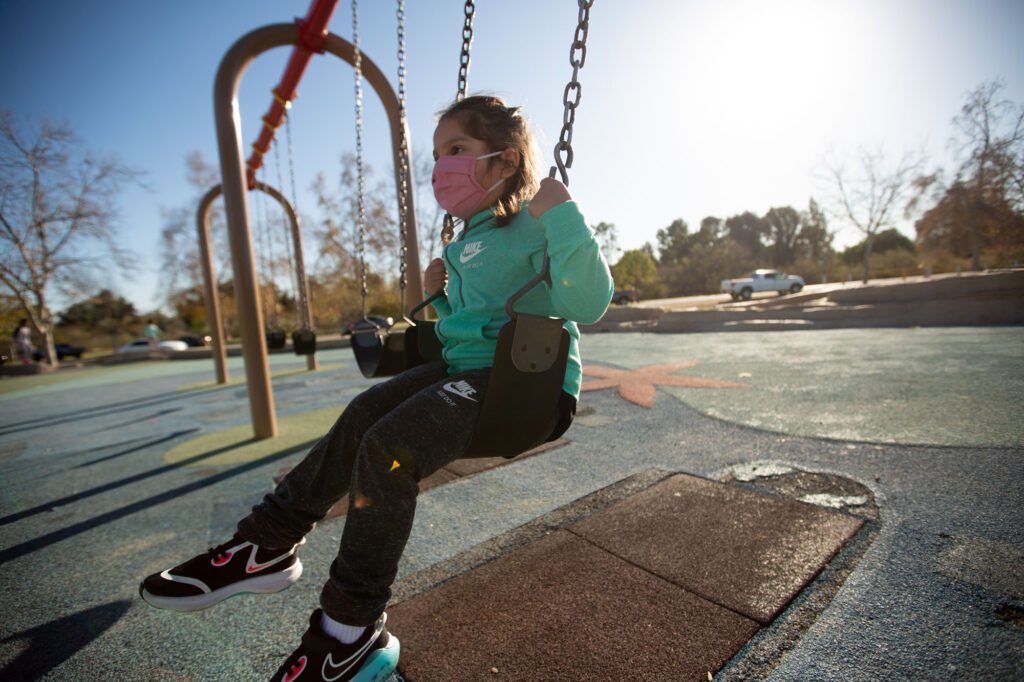California’s Children at Risk: The Hidden Toll of COVID-19
On a sunny afternoon at Lake Balboa Park, four-year-old Mae Villanueva chases after a fluttering kite, her laughter echoing through the air. Yet, lingering behind the joy of playtime is a heavy concern. Mae’s parents, like many others across California, grapple with the fear that without in-person school experiences, their daughter may fall behind in reading and social skills. As they watch her play, their minds are clouded with unsettling statistics: since the onset of the pandemic, over 350,000 California children have tested positive for COVID-19, and some have developed severe complications, including a rare inflammatory syndrome known as MIS-C. This juxtaposition of innocence and anxiety underscores the dual crisis facing families: the immediate threats posed by the virus and the long-term impacts of disrupted education.
The Overlooked Vulnerability of Children
While discussions about COVID-19 primarily focus on adult fatalities, the numbers reveal a disturbing reality for children. Pediatric cardiologist Dr. Jackie Szmuszkovicz from Children’s Hospital Los Angeles highlights the worrying uptick in severe cases tied to Multi-system Inflammatory Syndrome in Children (MIS-C). “The sheer volume of COVID-19 infections in the community directly correlates with the rise in serious cases among children,” she explains. “We are preparing for an increase in MIS-C cases following community surges, especially with new, more contagious variants looming.”
Understanding MIS-C
MIS-C is an inflammatory condition that can strike children weeks after they’ve been infected with the coronavirus, even if their initial illness was mild. Symptoms include fever, abdominal pain, rash, and extreme fatigue, reflecting a systemic response that may endanger the heart and other vital organs. The syndrome has affected 176 children in California so far, with Latino youth disproportionately represented among those diagnosed.
- 64% of COVID-19 cases among children in California are Latino, despite only comprising 48% of the youth population.
- Parents should watch for signs of MIS-C a few weeks post-COVID diagnosis.
- Early treatment can greatly improve outcomes, reducing the risk of severe complications.
Dr. Erica Lawson, a pediatric rheumatologist at UCSF Benioff Children’s Hospital, notes, “With increasing community transmission, we inevitably see more children facing severe outcomes. Our pediatric population reflects the high-risk demographics we see in adults.” In acknowledgment of systemic issues, about 54% of adult COVID cases in California involve Latino individuals, raising concerns about children in households where conditions make isolation difficult.
Racial Disparities and Public Health
As the Centers for Disease Control and Prevention reveals, the trends observed among children echo broader national patterns. “The majority of children impacted by COVID-19 and MIS-C are Latino or Black,” explains Dr. Behnoosh Afghani, an infectious disease expert at UCI Health. “The socioeconomic challenges these families face directly contribute to the elevated risk.”
The Psychological Toll of the Pandemic
Alongside the physical health challenges posed by COVID-19, parents are confronted with another pressing concern: the psychological impact of prolonged school closures. Educational psychologist Dr. Michael Kantor asserts, “The interruption of structured learning environments not only affects academic progress but also the mental well-being of children. Schools provide essential social structures that are irreplaceable.”
Amidst her fears for her daughters’ academic futures, Los Angeles mother Alexis Winter reflects on her family’s recent bout with COVID-19. “It’s terrifying,” she admits, recalling her children’s symptoms, “and I can’t help but feel like I’m losing control over their health and education.”
The Calls to Reopen Schools Safely
The mounting evidence of learning loss has ignited debates over school reopenings. Dr. Afghani advocates for a cautious but necessary return, stressing that “children deserve to be in a safe learning environment.” With the surge in vaccinations among adults, the hope is to curtail virus spread around children who remain ineligible for vaccination under 16.
Yet families remain divided. Gian Schwehr, a mother in Los Angeles, ponders whether to send her son back to school after he contracted the virus. “There’s definitely no easy choice,” she notes. “I’d have to think about it — the risks might feel too high.”
Anticipating New Variants
As new COVID-19 variants emerge, pediatricians are on high alert. The B117 variant, initially identified in the United Kingdom and now present in California, has shifted the focus on transmissibility and its impact on pediatric health. Dr. Lawson warns, “If the new strain is indeed more infectious, we can anticipate a rise in cases among children—leading to a potential increase in MIS-C cases.”
As the state navigates the delicate balance of reopening schools while keeping children safe, health experts emphasize the need for strict adherence to safety guidelines. “We must unite in our commitment to prevent the spread of COVID-19 within our communities,” urges Dr. Szmuszkovicz. “The stakes couldn’t be higher.”
The struggles of families like Mae Villanueva’s reveal a profound truth: While the world grapples with public health, the tender lives of children hang in the balance. They are not just numbers in a report; they are the faces of a generation at risk, brimming with potential yet shadowed by uncertainty. As communities strive for recovery, it becomes crucial to protect and advocate for the youngest among us—a generation that deserves more than just survival, but also a future filled with promise and hope.





